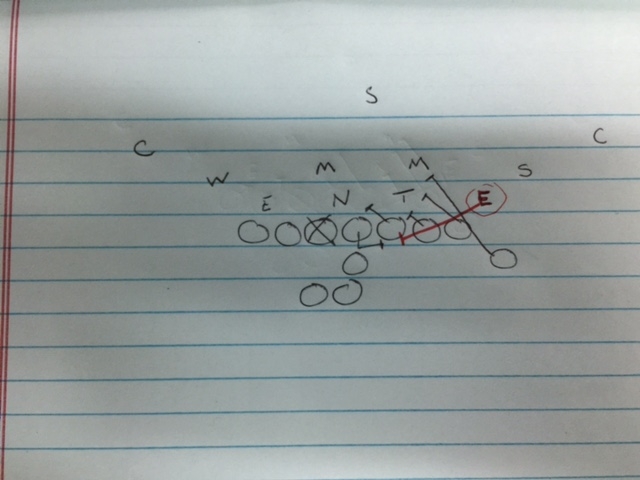Guide for Coaching the Defensive Line
If you control the line of scrimmage you will control the game. Youth football coaches will sometimes over look defensive line play. Not us. We take coaching the defensive line very seriously. With that said, here is a quick guide for coaching the defensive line. It is vital that these proper defensive line technique/responsibilities are practiced every single practice.
Here are the main aspects of coaching the defensive line:
Youth Football Defensive Stance:
Lineman should have feet shoulder width, with their push off foot slightly back. Head needs to be watching the ball. One hand should be in the ground and the other arm/hand should be up in jolting/launching position. Have those hands in the ready position to jolt/launch on offensive linemen. It is also very important that your kids are set and ready as soon as the ball is spotted by the referee.
Attacking on Ball Movement
When coaching the defensive line make sure the linemen are watching the ball. The defensive line must explode on ball movement, not at the sound of the QB. On every level of football teams will try to make the defenders jump off-sides with hard snap counts. Teams will go on hard counts- but they will also go on fast counts. Make sure your defense is ready to attack on ball movement. Let’s not forget that the offense can do formation shifts, ultimately trying to get your DL to jump off-sides. Every drill you do, go on ball movement. Do your sprints & start all drills on ball movement. Get right back on the line because the offense doesn’t have to wait for you!
(See Also) Coaching Defensive Line and Stances
Staying Low-Launching:
The defensive lineman must always stay low when they are firing out on ball movement. Coming out high will allow offensive linemen to push your DL around. Engage blockers, launching into the blocker on the snap of the ball. Rip through the block, do not try to run around. When defensive lineman try to go around the blocks they will usually take themselves right out of the play. When DL tries to go around, they will leave their gap responsibility open. Launch with hands inside, feet active, and rip through! .
Squeezing:
Many youth football coaches do not teach their kids how to squeeze or what squeezing is. Squeezing is pressing down onto offensive linemen that are pulling or down blocking away from you. Squeezing will deter any space, voided gaps, and cutback lanes. Tell your defensive line if they aren’t getting blocked that means they are getting trapped or kicked out by a pulling lineman or even a running back. Squeezing down and taking on the kick/trap block will collapse the trap and counter play. Offenses like the double wing and single wing will kill you if you do not squeeze. Schemes that down block and kick out will kill defenses that do not squeeze.
Block Destruction
Block destruction is key for defensive linemen. The rip move should be practiced every single day. We do not teach any other block destruction technique. Block destruction is just as important as tackling. You cannot tackle the ball carrier unless you destruction the block.
See Also: Utilizing the Rip Move for Block Destruction
Gaps assignments
Each defender should have a gap to attack and defend. Say you’re defensive tackle is responsible for the B-gap (gap between guard and tackle) then the defensive linemen must attack the inside shoulder of offensive tackle. It is very important that the defenders secure their gaps! Defensive lineman must anchor their gaps. Anchoring is even more important for defensive tackles. If your DTs don’t penetrate and anchor their gaps and they chase, it will leave your defense open for counter plays.
Anchoring Gaps:
You want your defensive linemen to swarm to the ball carrier. There is no doubt about that. But, you do not want them to chase laterally. The defensive linemen need to penetrate, anchor their gap, then pursue.
